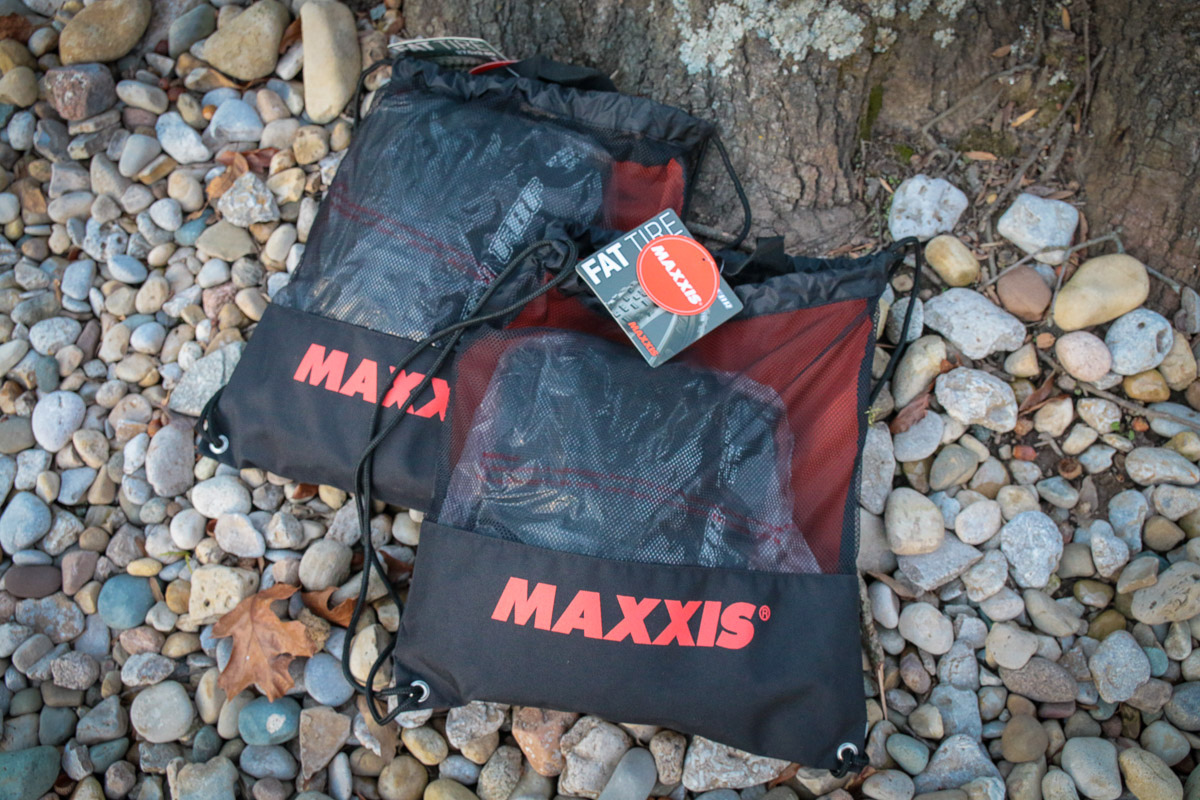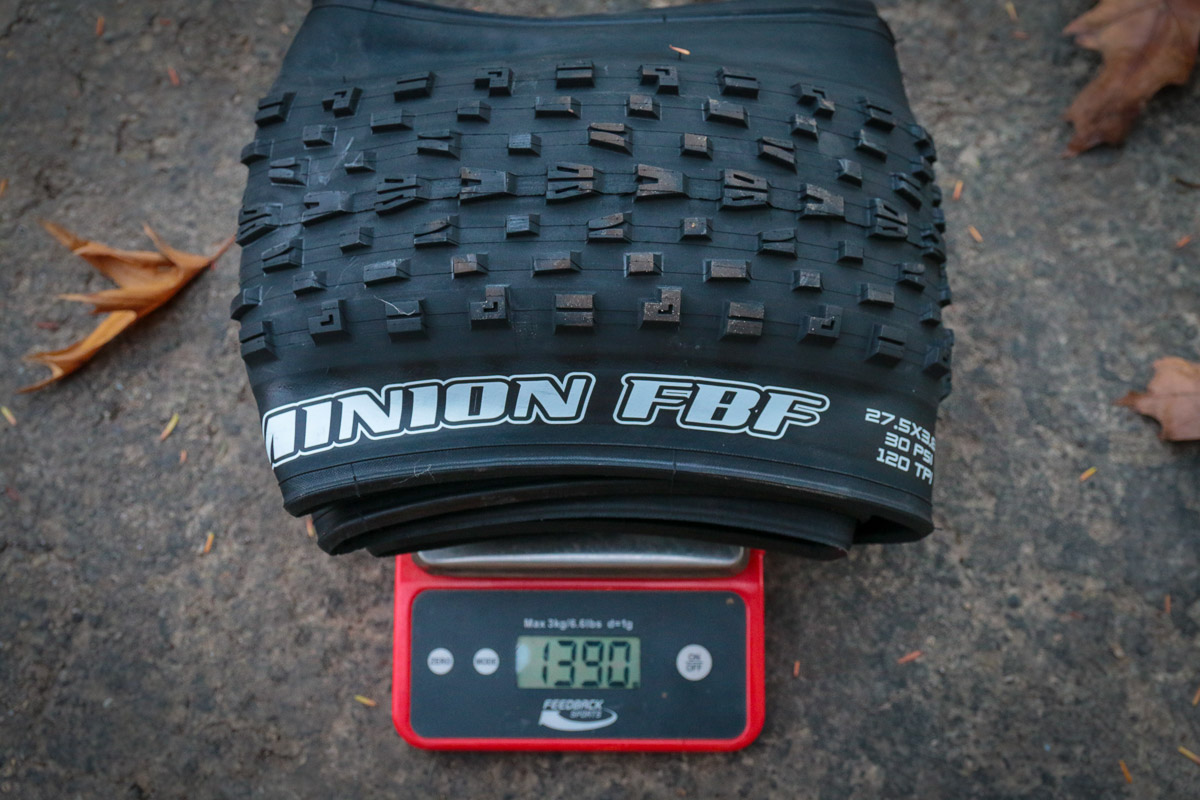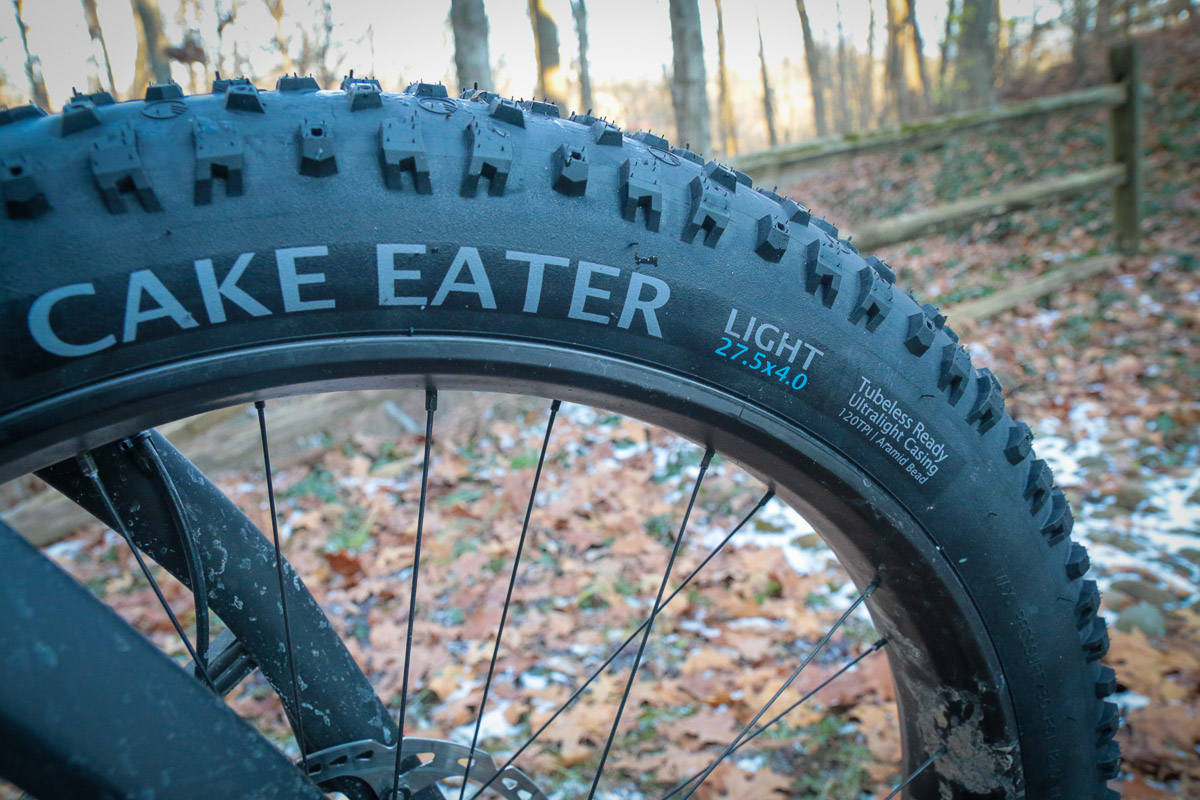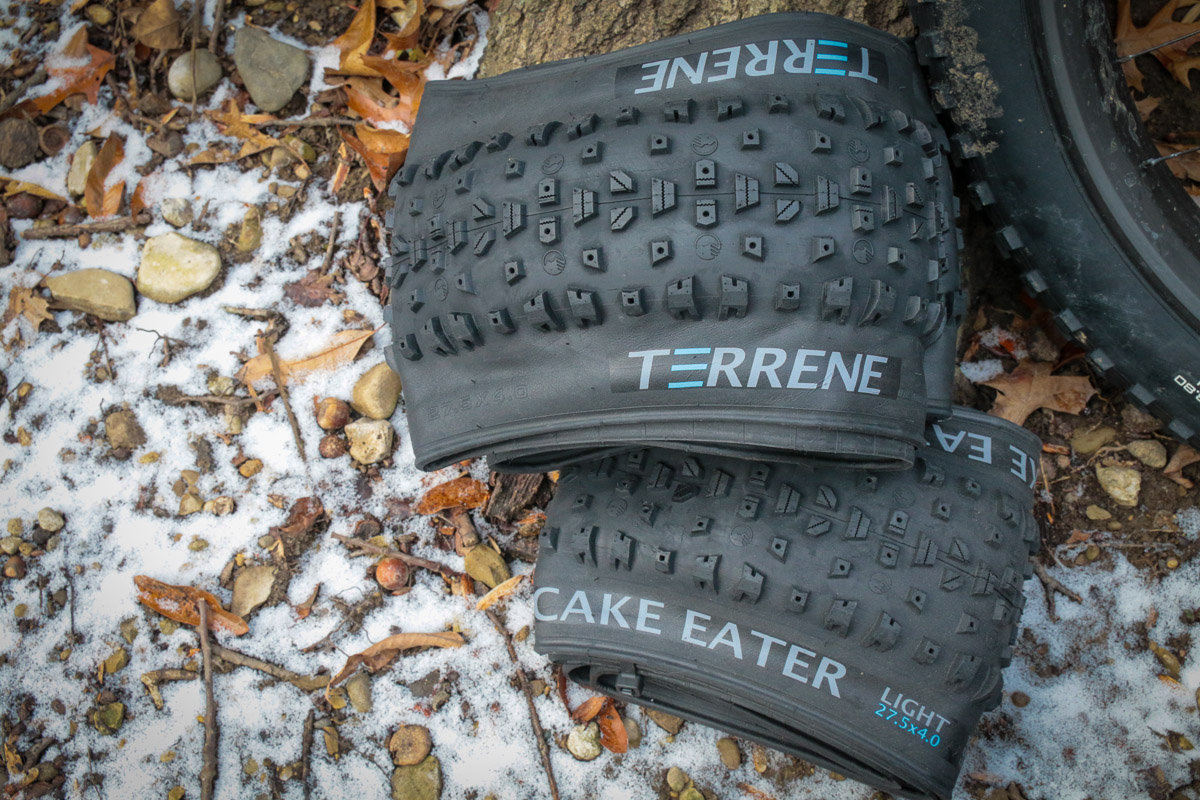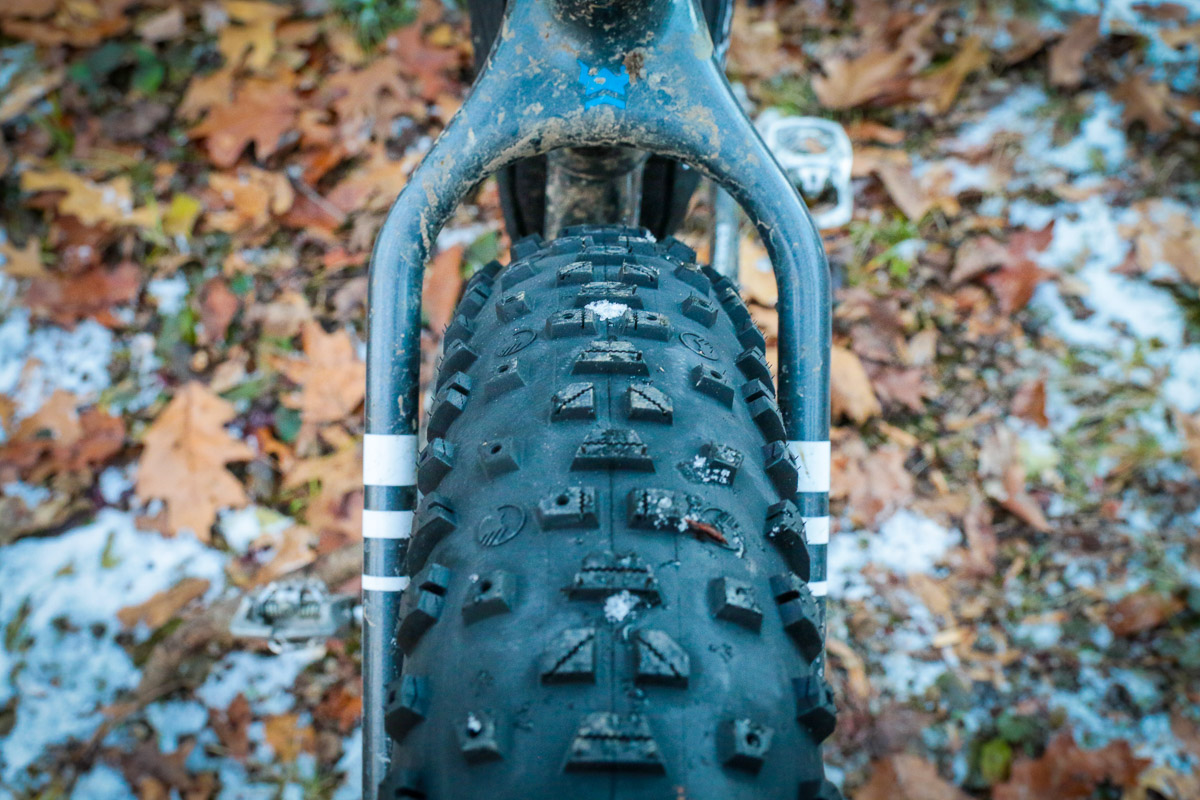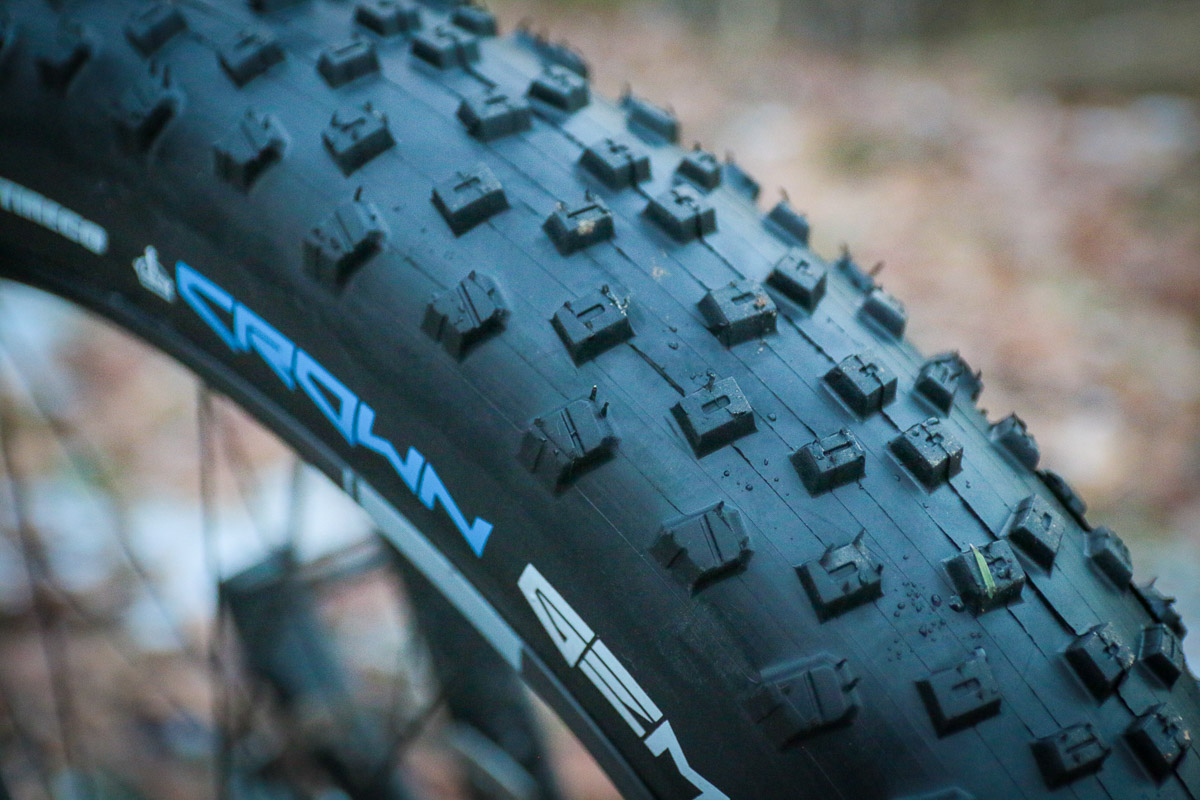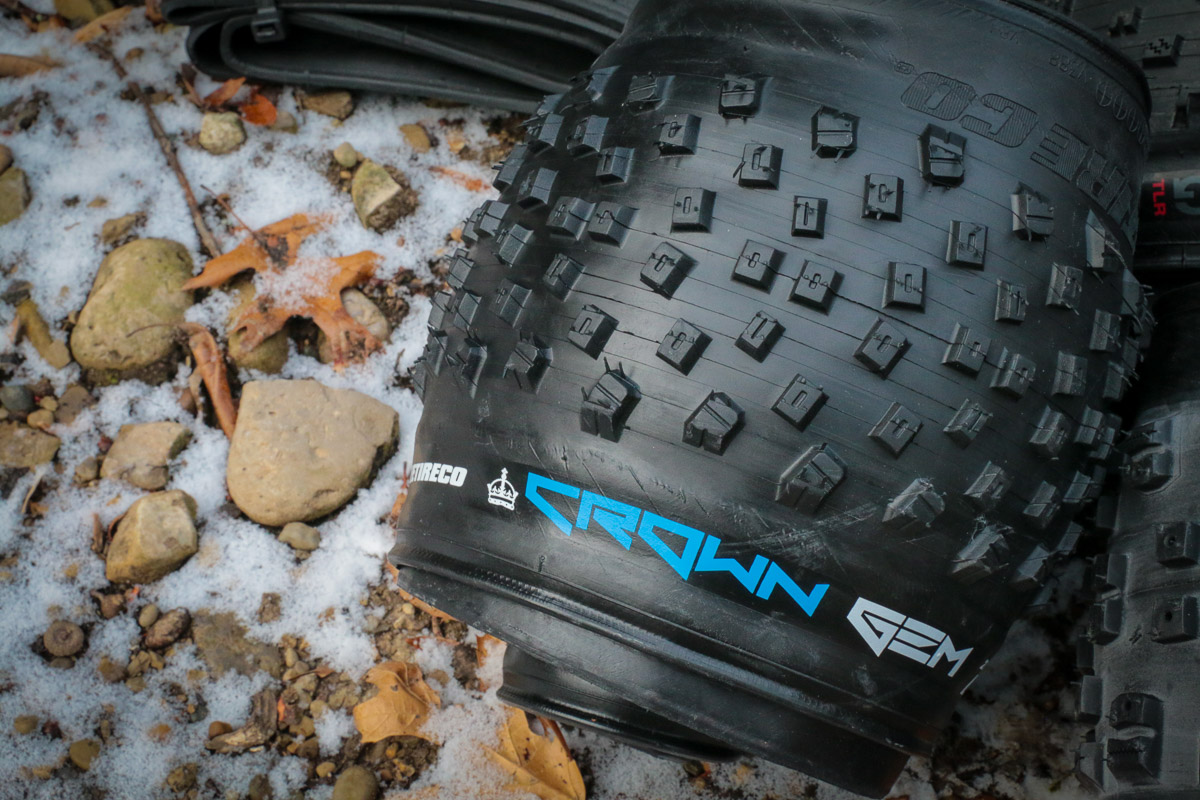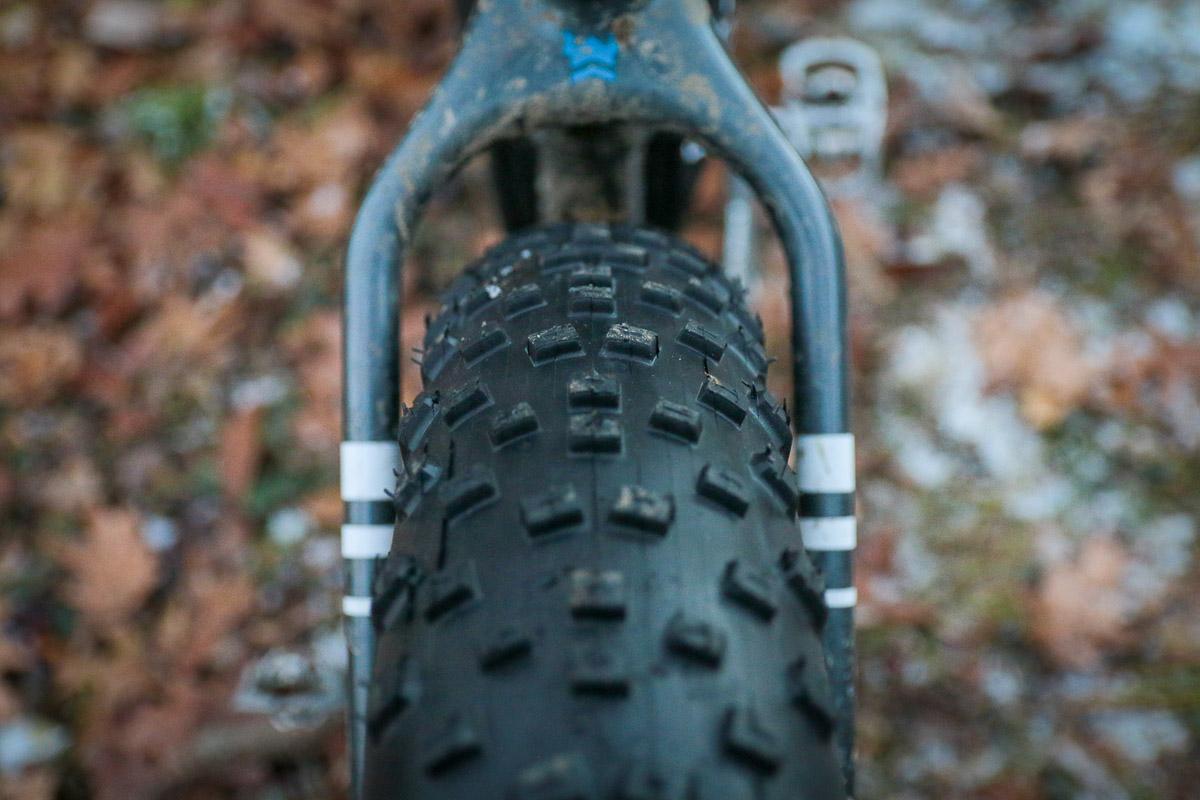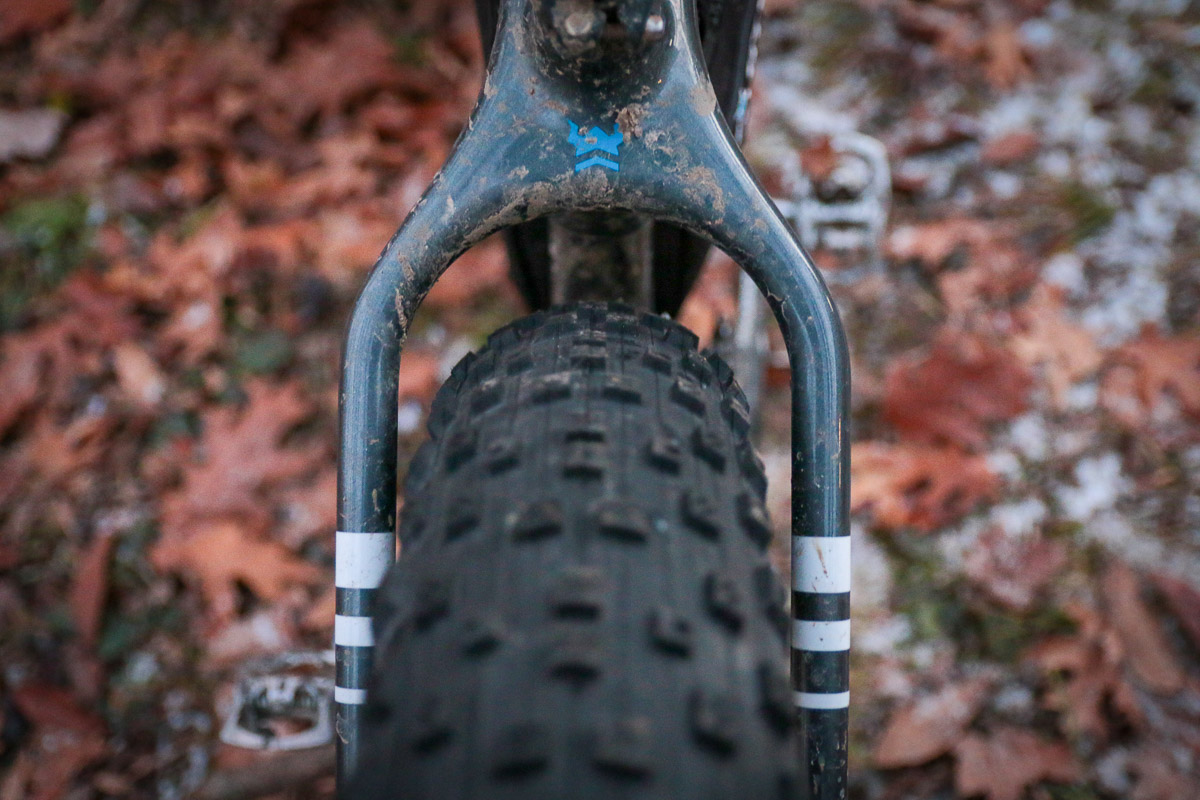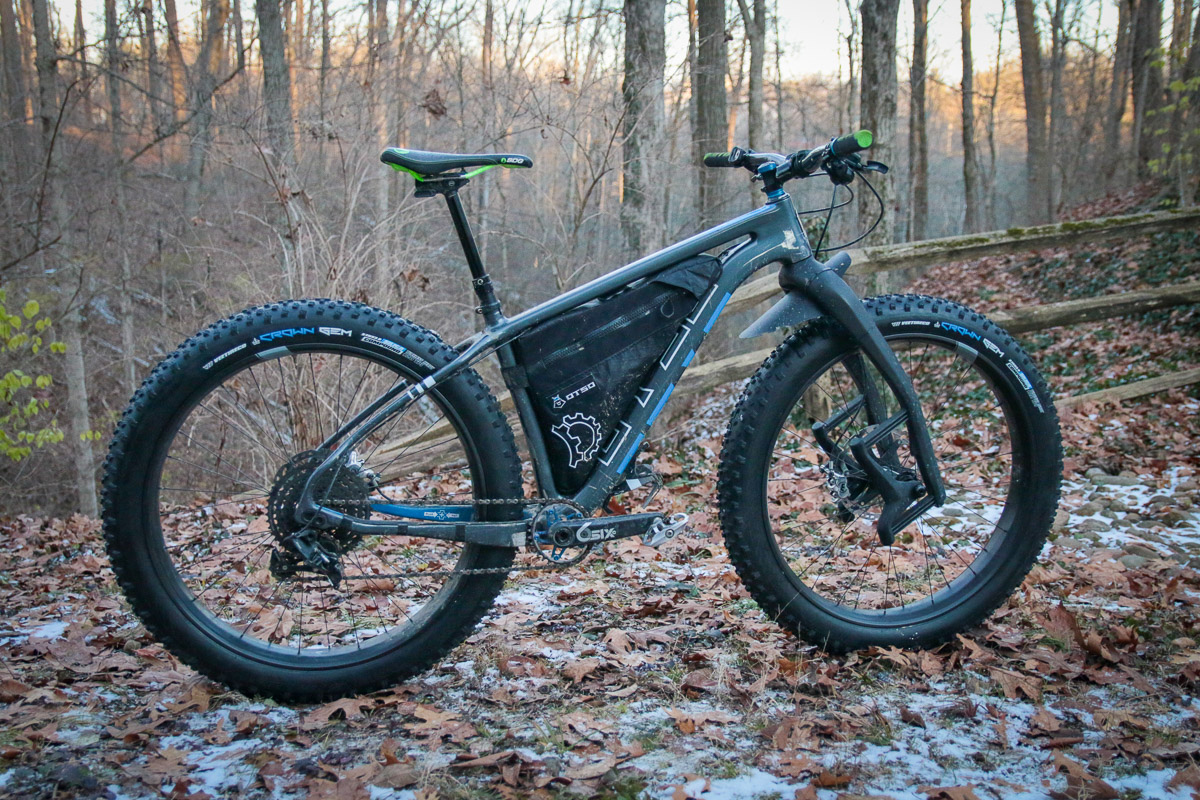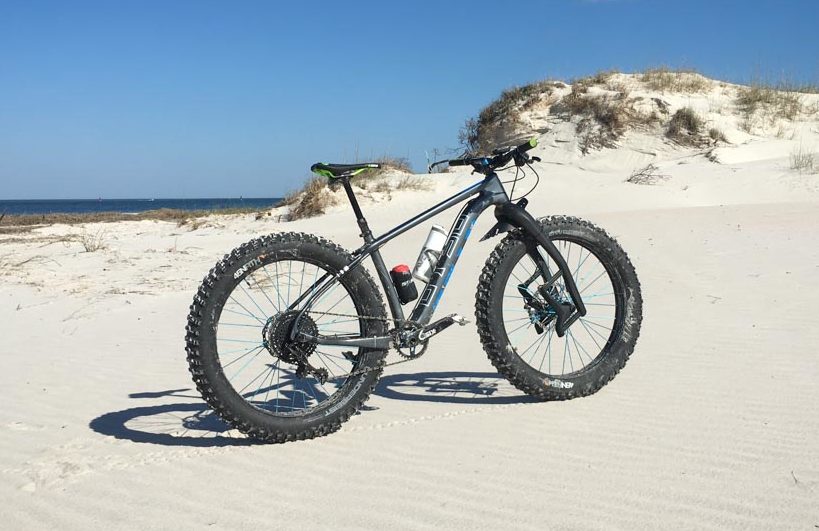If you’ve been in the market for a new fat bike lately, you might have noticed a relatively new option. For years fat bikes have all rolled on 26″ wheels and tires (with the exception of kids’ bikes and the odd 24″ fatty), but now there’s a new size in town – 27.5″. At this point we’ve seen both completely new bikes like the Rocky Mountain Suzy Q and a few Treks that were specifically built around the size, but we’re also starting to see bikes that were 26″ swapped over to the bigger wheel size like those from Heller and Salsa.
So why are we seeing an all-new size emerging? Mostly available in 27.5 x 3.8″, the new crop of fat bike tires measure close to the overall diameter of a 26 x 4.6″ tire but without the width. If we’re talking about a bike that used to run 26 x 4.0″ tires, upsizing to 27.5 x 3.8″ will be similar to going from a 27.5 to a 29″ wheel on a mountain bike. Better roll over, momentum, etc.
We’ve also heard that the reduction in sidewall height can have a positive effect on traction in certain situations with less bounce. Compared to a 26 x 4.6″ tire which has the same effective diameter, the 27.5 x 3.8″ tire will have a lower sidewall height for a lower profile tire. Earlier this year at Saddle Drive, Salsa’s Senior Product Manager Joe Meiser said he had been able to run lower pressures on the 27.5″ fat bike tires due to their stiffer side wall and felt that it improved traction on groomed snow trails. It should also stand to reason that lower, stiffer sidewalls will result in better cornering performance on hard pack trails throughout the year.
But how do the tires actually stack up in terms of numbers? We were just as curious as anyone, so we called in all the 27.5″ fat bike tires we could currently get our hands on and a set of Whisky No. 9 80w carbon wheels to mount them to. While the bikes have been out for about a year now, the majority of tires are just starting to roll out. The options we secured for testing include:
- Maxxis Minion FBF/FBR
- Terrene Cake Eater
- Vee Crown Gem
- Bontrager Gnarwhal, Barbegazi, and Hodag.
Between the seven tires, the widths include 3.8, 4.0, and the Bontrager-only 4.5″.
Maxxis Minion FBF/FBR
Using the same base fat bike tread pattern that has made these tires so popular, the Maxxis Minion combo includes the FBF (front) and FBR (rear). When it comes to 27.5″ fat bike tires, the Minions are available in both 60 and 120 TPI versions, and the 120 TPI versions come in standard or EXO sidewalls. It’s worth pointing out that the non-EXO 120 TPI tires shown above are not called out as Tubeless Ready on the Maxxis website (or anywhere on the tire), but they seated and sealed up flawlessly on the Whisky No.9 80w rims used in the test.
The FBF also came in at 1,390g which is 10g less than claimed, while the FBR was surprisingly 170g lighter. Maxxis also gets points for their packaging – no giant boxes or plastic sleeves, but reusable bags. The 120 TPI EXO/TR version is priced at $127 on the Maxxis site.
When it comes to measured width, these were also the closest of the 3.8″ wide tires to their claimed size. Measured at their widest point while mounted on the 77mm internal Whisky rims, the FBFs read 3.77″ and the FBRs were right there at 3.76″. For measuring purposes, each rim was inflated to 25psi to seat and stretch the tire, then each was measured at 8psi.
Terrene Cake Eater
The newest tire in the Terrene line up, the Cake Eater is available in a number of sizes including 26×4.0, 26×4.6, 27.5×4.0, and 27.5×2.8 – all of which are studdable.
Terrene claims that these were inspired by winter car tires and have a lower center tread height with deep siping and aggressive, studded cornering knobs. As usual, you can ride them studless (or with the Terrene Stud Plugs to fill the holes), or add your preferred stud pattern for better grip on ice and snow.
For the 27.5 x 4.0″ tires, the Cake Eater is available with or without studs with their Light Folding tubeless ready casing for $120/$200. In terms of width, the Cake Eater would probably be better labeled as a 3.8″ with an actual width of 3.75″ – which is very close to the Maxxis Minions. At 1279g, the Cake Eater Light un-studded is definitely competitive on weight.
Vee Tire Co. Crown Gem
Leaked earlier this year at Saddle Drive on the new Heller Bloodhound, the Vee Tire Co.
The Crown Gem is part of their ever increasing range of fat bike tires. Not even on the Vee Tire Co. website yet, we got our hands on an early sample of the 27.5 x 3.8″ tire. Using an oversized version of the Crown Gem trail bike tread pattern, the fat bike version comes in at 1387g.
Using a 120 TPI Tubeless Ready casing, the Crown Gem features Vee’s Silica compound for better grip in snowy/wet conditions. Again mounted to the 77mm internal Whisky carbon rim, the tire measured 3.69″ wide.
Bontrager Gnarwhal, Hodag, and Barbegazi
Bontrager has the widest range of 27.5″ fat bike tires – which makes sense given that they have gone all-in on 27.5″ fat for 2018. Not only does Trek have a number of fat bikes running 27.5 x 3.8″ tires, but they also have a few that are built around the much larger 27.5 x 4.5″ tires which only Bontrager offers at the moment.
The Hodag is essentially a 27.5″ version of their previous fat bike tire which offers low rolling resistance and relatively light weight. Priced at $119.99, the tire came in at 1265g on our scale in a 27.5 x 3.8″ size. Bontrager prices all of their fat bike tires the same regardless of size at $119.99, but if you want studs added they run $224.99.
Measuring 3.67″ on the Whisky rims, the Hodag was the smallest tire labeled as a 3.8″ on test, but only 0.02″ narrower than the Vee Crown Gem.
Since we were only sent one of each tire, for measurement purposes we combined the Hodag in the rear with the 27.5 x 3.8″ Gnarwhal in the front. A more aggressive, studdable tire, the Gnarwhal is offered in both 3.8″ and 4.5″ widths. The 3.8″ version came in at 1334g.
The smaller Gnarwhal measured a bit bigger than the Hodag at 3.69″ wide, but they’re still on the small side for the group.
Finally, the Barbegazi and Gnarwhal make up the 27.5 x 4.5″ segment for Bontrager with the Gnarwhal being the more aggressive, studdable version of the two. Because of that, the Gnarwhal 4.5″ is substantially heavier at 1506g vs 1253g. That makes the Barbegazi one of the lightest 27.5″ fat bike tires available in spite of also being one of the biggest.
As you would expect, the Bontrager 4.5″ tires measured the widest of any on test, but they’re not quite 4.5″ wide. In fact, when mounted on the 77mm internal Whisky rims, they only measured 4.21″ for the Gnarwhal and 4.13″ for the Barbegazi. That’s still a substantial increase over the 3.8/4.0″ tires, but it just goes to show how much real world tire width can vary from claimed.
Overview
A narrower-than-claimed tire isn’t all bad though – for me it meant that it actually fit in the Otso Voytek frame used for a test platform here. Initially, I expected to just mount up the the 4.5″ tires on the rims and measure them without actually installing them in the frame since I figured that they wouldn’t fit. Instead, they actually fit with room to spare when the dropouts are in the longest setting – which is a very important distinction. The Voytek is a rare bike that fits a wide range of tires thanks to their 3 position adjustable dropout position. Don’t expect 4.5″ fat bike tires to fit on all the fat bikes out there.
Effect on Bottom Bracket Height
One of the main reasons for this round up is that a few companies like Heller and Salsa are selling bikes that used to run 26″ fat bike wheels and tires with 27.5″ in the current model year without making changes to the frame’s geometry. We wanted to know what that meant in terms of bottom bracket height – would the 27.5″ tires raise the BB height compared to 26″?
To find out, we set the Otso Voytek’s dropouts at the longest position so that all of the tires would fit into the frame. Then we mounted up each tire combination on either the 77mm wide Whisky No. 9 80w wheels for 27.5″ or the 76mm wide HED BAD wheels for 26″. From there we measured the height at the center of the crank spindle using a framing square and the same bike position on a level surface. It’s not going to be perfectly accurate, but it’s accurate enough to get the general idea of any change in tire diameter. Also, since we live in the U.S. and still use archaic measurements, the framing square only had Imperial measurements, so they had to be converted to Metric.
If your goal is to compare 27.5 x 3.8″ tires to 26 x 4.6″, then they are indeed very similar in effective diameter. In fact, the 26 x 4.6″ 45NRTH Flow/Dunderbeist combo had exactly the same BB height as the Maxxis Minion FBF/FBR combo.
But if you’re slapping a set of 27.5 x 3.8″ wheels and tires into a frame meant for 26 x 4.0″, then you will see the BB raised a bit. How much depends on the tires in question since they vary so much across the board. But if you go off our control which was a 26 x 4.0″ 45NRTH Van Helga which measured 303.2mm for the BB height, you’re looking at an additional 6-11mm for the 27.5 x 3.8/4.0″ tires. In this case you would end up with better roll over, but the higher BB may have an effect on handling. When asked about the change, Salsa stated that after quite a bit of testing on 29 x 3.0″ and 27.5 x 4.0″ which have similar rollout numbers, they feel that the change in bottom bracket height actually improves the handling of the bigger wheels and tires.
It was also interesting to see that, at least in terms of the Otso Voytek, it’s possible to run both 27.5 x 3.8 and 27.5 x 4.5″ tires with the same bottom bracket height by using different dropout settings. When the 3.8″ tires were mounted in the forward dropout setting (not shown on the chart), they had a BB height that was very close to the 4.5″ tires when mounted in the rear most dropout setting. If anything, this test has shown the value in having a fat bike with adjustable dropouts that alter the BB height so you can compensate for the vast difference in tire sizing if you really want to control how your bike rides.
Takeaway
27.5″ fat bike wheels and tires are bigger than many 26″ – but maybe not as much as expected. In this group, the 27.5 x 4.5″ tires were by far the tallest, adding another 6mm in BB height to the next closest 27.5″ tire. But in terms of 27.5 x 3.8″ and the larger 26″ fat bike tires, they are pretty close in diameter. Swapping in 27.5 x 3.8″ tires for a bike built around 26 x 4.0″ tires will likely result in a change in BB height, adding 6-11mm.
As far as the ride itself, we still have a lot of riding to do on 27.5″ but our initial results are mixed. The shorter sidewalls definitely contribute to better cornering and less bounce, and feel a bit faster, but in terms of float and grip on loose terrain big 26″ tires still feel like they have an advantage. We still have a lot of tinkering left to do – including running lower pressures than we would on 26″ so we’ll save our official judgement for later. For now though, it seems that the 27.5″ wheels and tires are better suited towards fat bikes that will be used for racing or year-round rides, while big 26″ is still the answer for back country exploration or more specialized riding in challenging, loose, conditions.
Down the road, we wouldn’t be surprised to see 27.5″ fat bikes completely replace the 26 x 4.0″ builds, but suspect the 26 x 4.6 or 4.8″ bikes will stay around at least for the foreseeable future.

